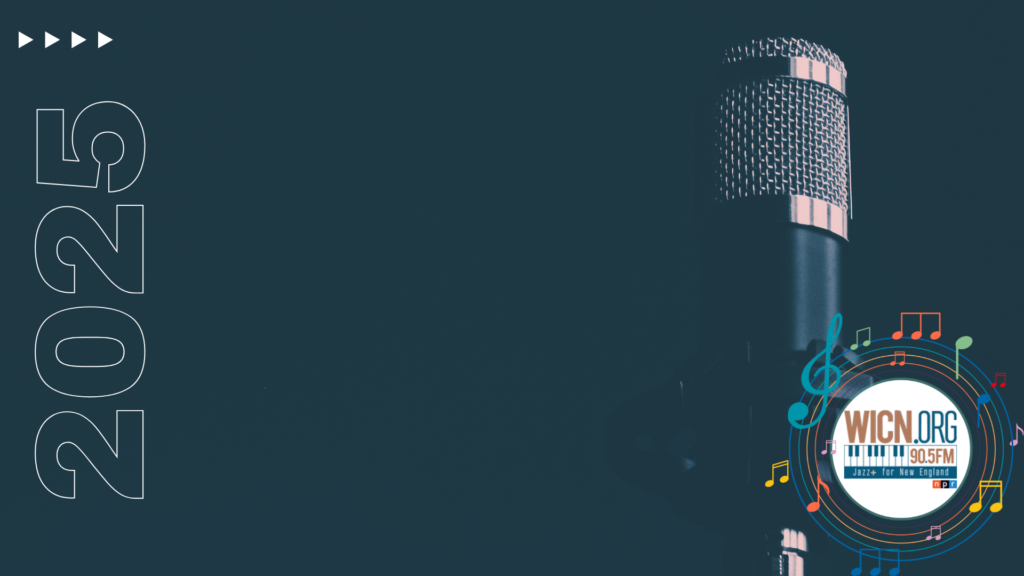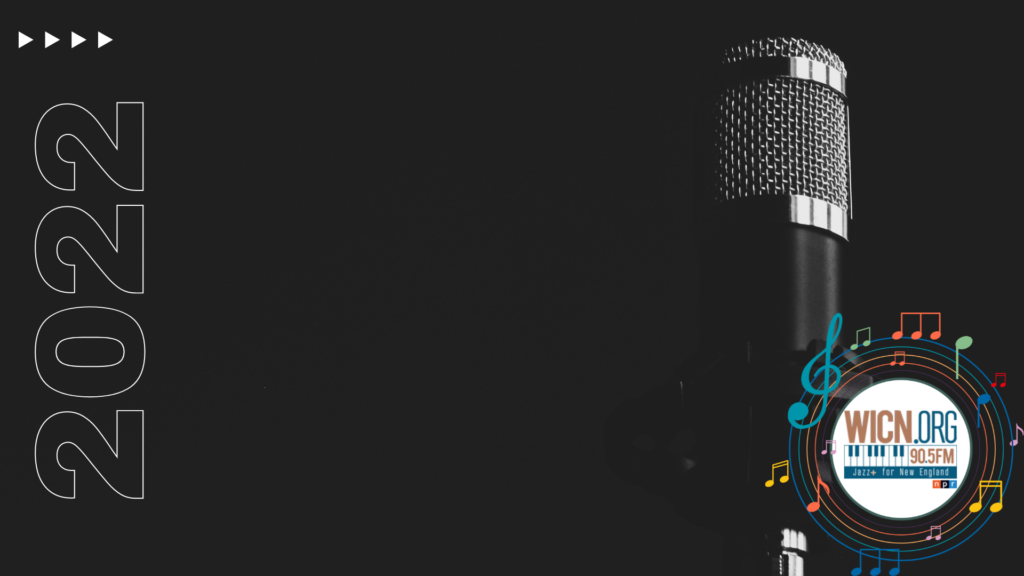WICN Artist of the Month, November ’22: Tito Puente
Written by Doug Hall on November 2, 2022
As the driving rhythm and dance-based sound of Afro-Cuban music was being introduced to the U.S. in the late ‘40s by Cuban bandleaders, most notably Machito and his Latin orchestra, a refinement of musical genre was evolving. With styles incorporating Afro-Cuban, Cubop, (a form of Latin jazz), and salsa music, (a dance-based genre with heavy Latin-instrument percussion), Machito was to create the foundation for other Cuban and Puerto Rican bandleaders and musicians to further its popularity and development. Tito Puente, dynamic percussionist, driving bandleader and exceptional showman, would follow to become synonymous as the King of Latin music or “El Rey,” and establish and promote its popularity over his lifetime, “fusing American jazz with Afro-Cuban rhythms, Puente was central to the ongoing popularity of Latin music in the U.S.”
During the Swing era leading up to WWII, there was a musical interchange occurring, helped by Puente and other Cuban and Puerto Rican bandleaders, who in their youth had been listening on the radio, and then later watching performances, of big band legends like Tommy Dorsey, Count Basie, Benny Goodman, and Artie Shaw. In New York City’s dance halls and clubs, Puente and other Cuban and Puerto Rican bandleaders were developing a Latin based response musically, but were also, coincidentally, being listened to by traditional American bandleaders, who were drawn to the dance beat of the Afro-Cuban rhythms: “Just as Puente was attempting to integrate Afro-Cuban rhythms with the popular music of the era, the big bands of the early ’40s were growing interested in the ‘Spanish tinge,’ incorporating congas, bongos and timbales into their ensembles.”
Growing up in Harlem in the ‘30s, Puente had already been hearing the music of the Jazz Age. “Puente absorbed its culture like a sponge, spending countless hours listening to big bands of the era on the radio and seeing vaudeville acts and the latest Hollywood movie musicals.”
His mother would play a key role by enthusiastically supporting him with piano lessons at the highly respected New York School of Music (later in his career, he would attend The Julliard School). Surrounded by a growing and vibrant musical environment in East Harlem, he would be listening and soaking up the nature of rhythm and its role in local bands that were playing exclusively Puerto Rican and Cuban-derived musical forms. Early on, Puente would dedicate his focus to learning Latin percussion instruments, specifically the timbales, beginning his professional career at a young age. “At twelve Tito had already begun performing in local and society bands…sitting-in with the band at the Park Place Hotel in New York City.”
Already demonstrating wide versatility, Puente, as a teenager, was joining “society bands,” requiring him to play percussion for popular period dance floor contests, including tangos, waltzes, foxtrots, bolero-rumbas, and polkas. Receiving attention and exposure with his talents and showmanship, Puente found himself positioned, by circumstance, to step into a dream role and opportunity as a drummer for Machito’s Orchestra, due to the previous musician being drafted into WWII. Puente would influence, directly, the showcasing of his main instrument, the timbales, by convincing Machito to move the timbales to the front of the stage. Puente became a rising star, not only playing percussion with an enormous driving beat and virtuosity, but also incorporating a flamboyant dance style at the same time.
In 1947 Puente formed with his own 10-piece band (Piccadilly Boys), which expanded two years later to include four trumpets, three trombones, and four saxophones, as well as a number of percussionists and vocalists. He would lead his own orchestras for the remainder of his career as the “King of the Mambo,” with his infectious and physical energy on stage and gifted arrangements, with an ever-changing expanse of musicianship and Latin-based instruments. Puente would become the main catalyst for driving the Latin jazz craze with “combined mastery over every rhythmic nuance with old-fashioned showmanship.” In addition to his sophisticated arrangements, he was truly a multi-instrumentalist, beyond his mastery of the timbales, playing piano, congas, bongos, and saxophone.
During this same period, while also drumming at the Copacabana nightclub with a Brazilian band led by singer Fernando Alvarez, Puente would complete his formal education at the Julliard School of Music, studying conducting, orchestration, and theory from 1945 -1947.
In 1958 Puente released Dance Mania, which has become his quintessential recording, with orchestral dance music at the highest possible level, with vocalist Santos Colón. As reviewed by AllMusic critic John Bush, “recorded as part of a just-signed exclusive contract with RCA and appearing in vibrant sound as part of the label’s Living Stereo series, Dance Mania exploded with a series of tight arrangements, propulsive playing, and the features of new additions in vocalist Santos Colón and conguero Ray Barretto.” This release includes signature compositions “El Cayuco, Cuando Te Vea, and Estoy Siempre Junto a Ti, all performed at tempos that encouraged his passion for dancing and a percussive driving rhythm.
In 1971 Puente would find a new audience and worldwide popularity for his composition Oye Como Va (1963) after it was re-recorded by the rock group Santana on their million-record selling album Abraxas. The song reached #13 on the Billboard charts. Bandleader Carlos Santana would electrify and overlay a rock melody with lead guitar but keep the rhythmic Latin dance beat as the backbone of the song. The building tempo also features Puente’s signature percussion instruments, with powerful syncopation in the hands of exceptional musicians on congas, timbales and drums.
Popularized in the 1992 film drama The Mambo Kings, Puente would play himself as bandleader and assist in the telling of the musical story behind the Latin Mambo sound, as seen through the turbulent rise of two Cuban brothers who find fame with their native dance music, but also tragedy. The film is based on the 1989 Pulitzer Prize-winning novel The Mambo Kings Play Songs of Love by Oscar Hijuelos. In his own personal review of the movie, he speaks as a musician who was at the forefront of the Mambo movement in the ‘50s, scoring one of the first mambo crossover hits with his composition Abaniquito: “This is the same music that I play all the time. But for the movie, I went back to my roots, went back to the culture of my music, especially in the percussive end. That’s where the excitement is.”
Outside of his idol, Machito, he is recognized as the central figure in musicianship and as a bandleader, defining the sound of Latin-based music in the U.S through musical recordings, arrangement, and performance.
After a career that spanned five decades, Puente died in 2000, suffering a major heart attack just after a show in Puerto Rico.
His many awards and recognition include the Billboard Latin Music Lifetime Achievement Award (1995), an Honorary Doctorate of Music from Berklee College of Music (1995), the National Medal of Arts award (1997), a Star on the Hollywood Walk of Fame, and posthumously awarded the Grammy Lifetime Achievement Award, plus winning 5 Grammy Awards during his lifetime.
In the 2000 New York Times obituary and profile of his life, his longtime manager Eddie Rodriguez reflected on his legacy, philosophy, and drive, “Tito was always a bandleader, the last of the real, true bandleaders, in the line of Duke Ellington and Count Basie,” said Mr. Rodriguez, who had spoken to Mr. Puente before he entered the hospital. ”He felt responsible. He said, ‘keep the boys working.’ That’s what he always said, ‘keep the boys working. Because I want to have my band when I get out; I want it to be tight.’ ”

